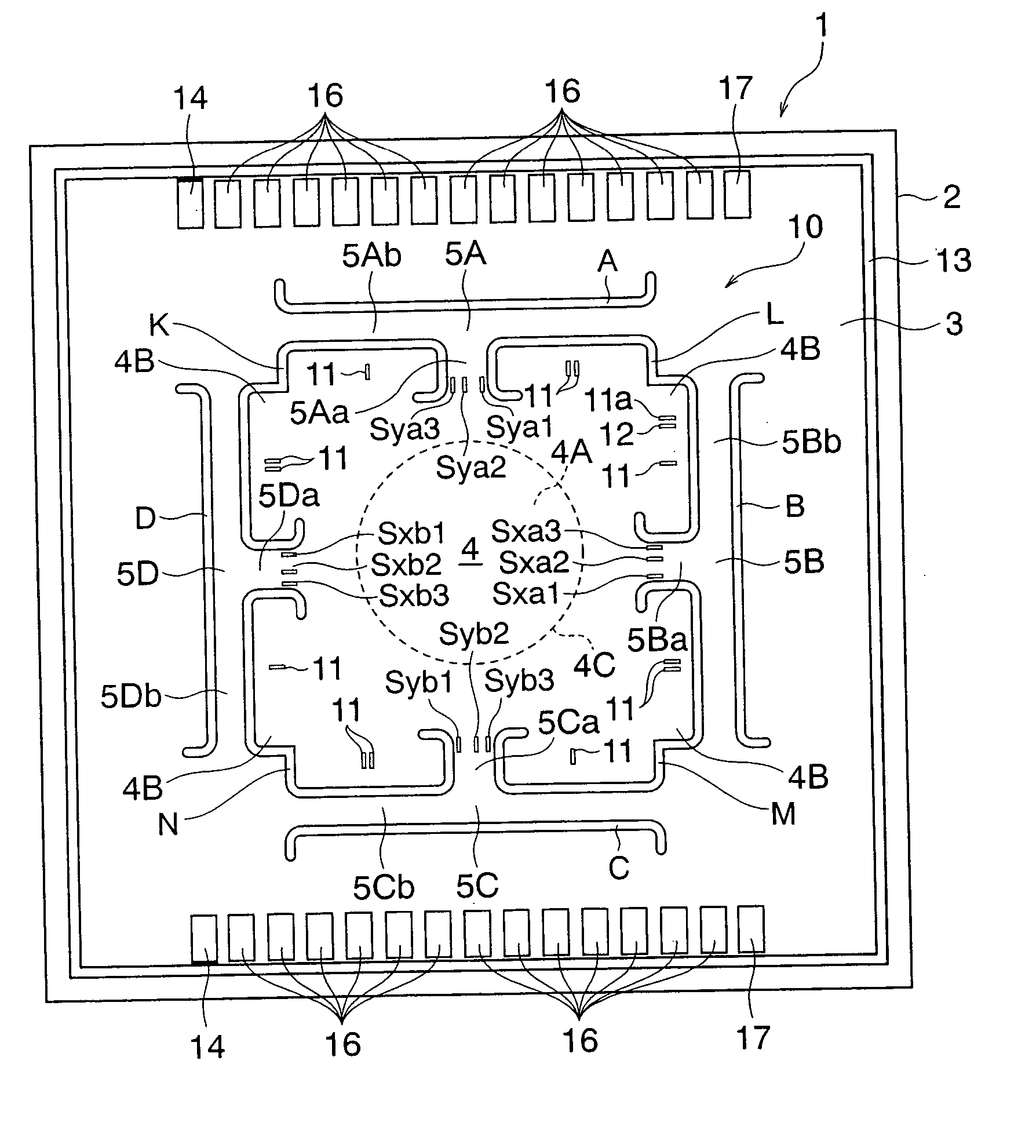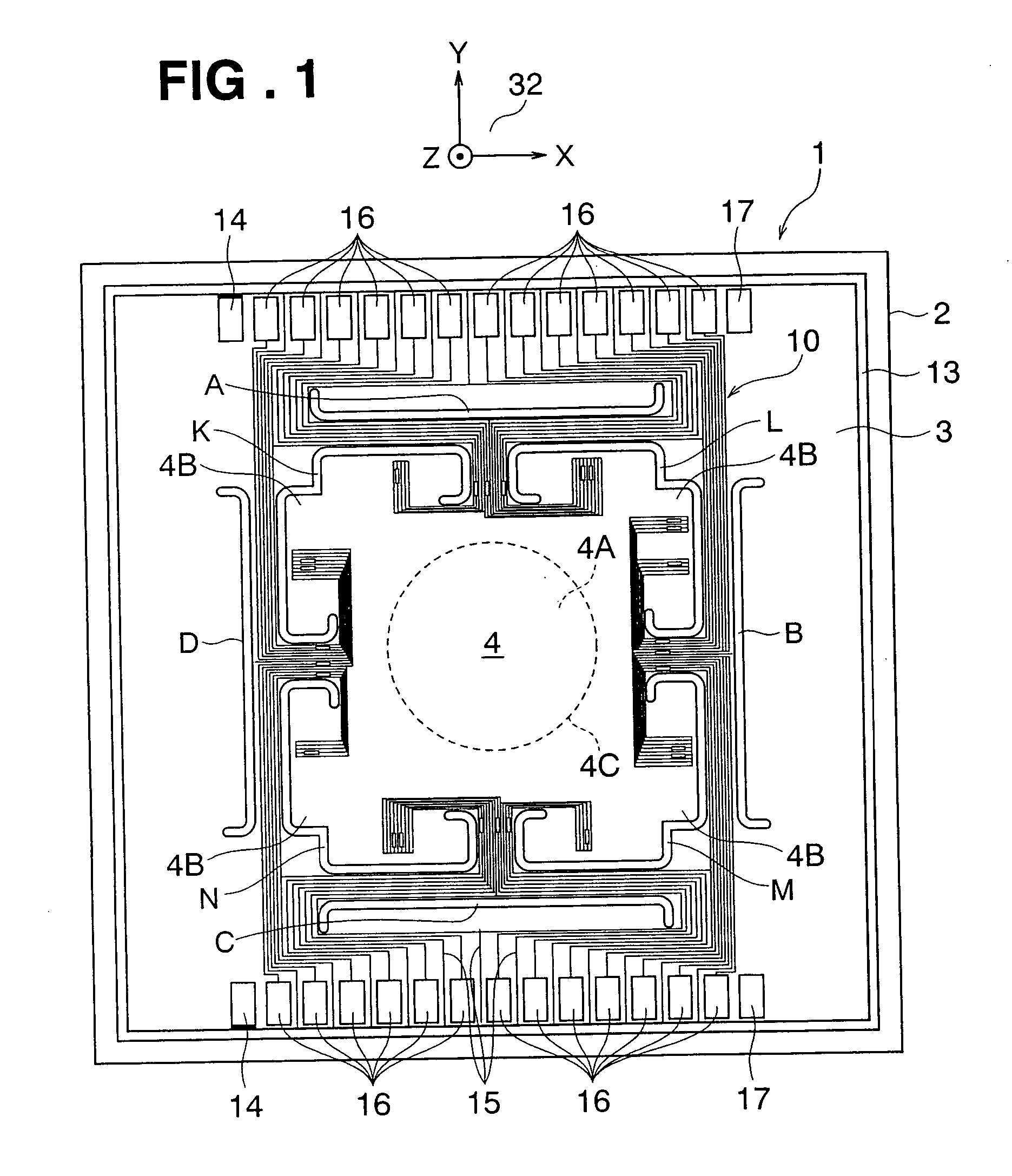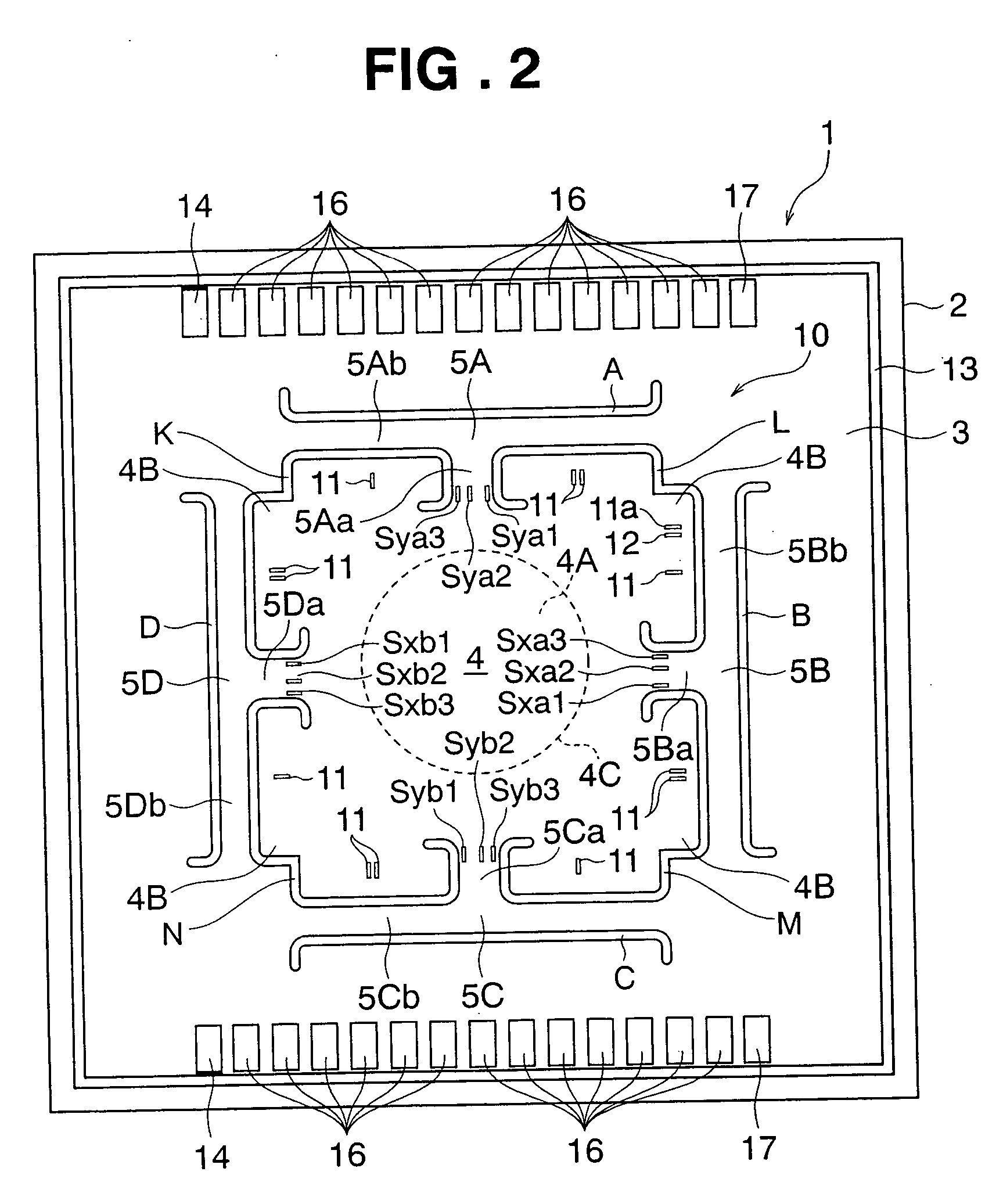Multi-axis force sensor chip and multi-axis force sensor using same
a multi-axis force sensor and sensor chip technology, applied in the direction of force measurement by elastic gauge deformation, force/torque/work measurement apparatus, instruments, etc., can solve the problems of poor manufacturing reproducibility, low sensitivity, and limited size reduction of the scope, so as to improve the sensitivity of the sensor chip and the sensitivity of the sensor. , the effect of reducing the size of the scop
- Summary
- Abstract
- Description
- Claims
- Application Information
AI Technical Summary
Benefits of technology
Problems solved by technology
Method used
Image
Examples
Embodiment Construction
[0047] A representative embodiment of a multi-axis force sensor chip according to the invention will now be described with reference to FIG. 1 to FIG. 4. In this embodiment, as a multi-axis force sensor chip, the example of a six-axis force sensor chip will be described. A multi-axis force sensor chip according to the invention is not limited to being a six-axis force sensor chip. FIG. 1 shows the six-axis force sensor chip in plan view; FIG. 2 shows the same six-axis force sensor chip with an interconnection pattern omitted, only strain resistance devices and electrode pads and holes being shown; FIG. 3 shows a peripheral part of one side of the square six-axis force sensor chip; and FIG. 4 shows one group of resistance devices and a structure of peripheral parts thereto.
[0048] The six-axis force sensor chip 1 shown in FIG. 1 and FIG. 2 is formed using a semiconductor substrate preferably square in plan view. The length of one side of this square semiconductor substrate is for exa...
PUM
 Login to View More
Login to View More Abstract
Description
Claims
Application Information
 Login to View More
Login to View More - R&D
- Intellectual Property
- Life Sciences
- Materials
- Tech Scout
- Unparalleled Data Quality
- Higher Quality Content
- 60% Fewer Hallucinations
Browse by: Latest US Patents, China's latest patents, Technical Efficacy Thesaurus, Application Domain, Technology Topic, Popular Technical Reports.
© 2025 PatSnap. All rights reserved.Legal|Privacy policy|Modern Slavery Act Transparency Statement|Sitemap|About US| Contact US: help@patsnap.com



